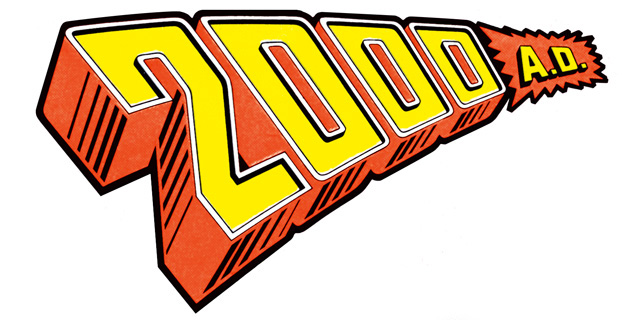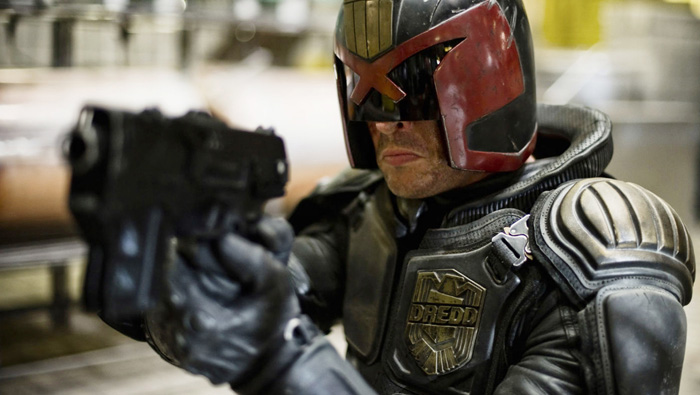2000AD, the sci-fi universe you’ve never heard of
10/06/2019
During the 70s, comic book characters in the US were still relatively light and fluffy. Wholesome heroes like Superman and Batman would triumph over evil, occasionally punch a Nazi in the nose and continually fight for truth, justice and the American way. Meanwhile…over on the other side of the Pond, quite the opposite was happening. An underground anti-establishment movement was gathering momentum.
Britain in the 70s was a troubled country, to say the least. The so-called Swinging Sixties were long since gone. There was political tension, a mounting series of economic crises and labor union strikes. There was growing dissatisfaction among the young, many of who were unemployed and there was a feeling that the established order was ready to be overthrown. This feeling significantly influenced music, magazines, fashion and ultimately pop-culture in general, the result of which was a new era in comic-book stories and characters.
As 1975 came to a close, the thoughts of Kelvin Gosnell weren’t on seasonal frivolities, he was thinking instead about a new wave of science fiction films he’d been reading about. He was an associate editor at IPC Magazines – once a UK publishing giant that also gave the world NME and Loaded – and he was wondering how they could jump on this bandwagon.
London’s local newspaper, The Evening Standard, had recently printed a story about how a couple of up-and-coming Hollywood directors were investing heavily in sci-fi – a genre that hadn’t been taken seriously in the cinema since the 50s. Gosnell pitched a few ideas and IPC asked Pat Mills, a freelance writer who had created boy’s comics Battle Picture Weekly and Action, to help develop it.
“Comics in the 70s, particularly boy’s comics, were going through a really bad time, they weren’t selling very well,” says Mills.
“Up until then, comics had been written by people who really didn’t want to be writing comics, they wanted to be writing proper novels or articles for proper magazines. The artists really wanted to be proper magazine illustrators instead of largely slumming it in comics and the editors were all waiting until they could get onto a proper job like being editor of Practical Gardening,” says artist Dave Gibbons, whose impressive portfolio includes Rogue Trooper and the Watchmen.
Mills took the helm and knew immediately the direction he wanted to go in. “The people that were chosen to work on the comic had to have a certain counter-culture attitude,” he says.
Fellow writer John Wagner was brought on board and they all began to develop characters. A number of different ideas were considered for the title, but the futuristic-sounding 2000AD was chosen, which in 1975 was 25 years into the future, far enough into the future for IPC to be confident that the comic wouldn’t last that long.
For his model, Mills wasn’t looking to America. He didn’t look at superhero material, because he doesn’t like superheroes. He was looking at France, where you had magazines like Metal Hurlant, which had launched only a year previously and contained visionary science fiction and fantasy stories and artwork by the likes of Jean Giraud and Jean-Michel Charlier, that had never been seen before anywhere in the world.
Tapping heavily into cinematic culture from the period, including Rollerball, Jaws and The Wild Bunch – all movies that kids weren’t allowed to see, Mills did not hold back with amount of violence in his stories.
“It was the 70s, that’s what culture was like, you just have to look at the sheer level of nihilism and brutality in cinema at the time,” he says.
“One of the big appeals for me for 2000AD as a child was the fact that it was insanely violent,” laughs Andy Diggle, former 2000AD Editor in Chief.
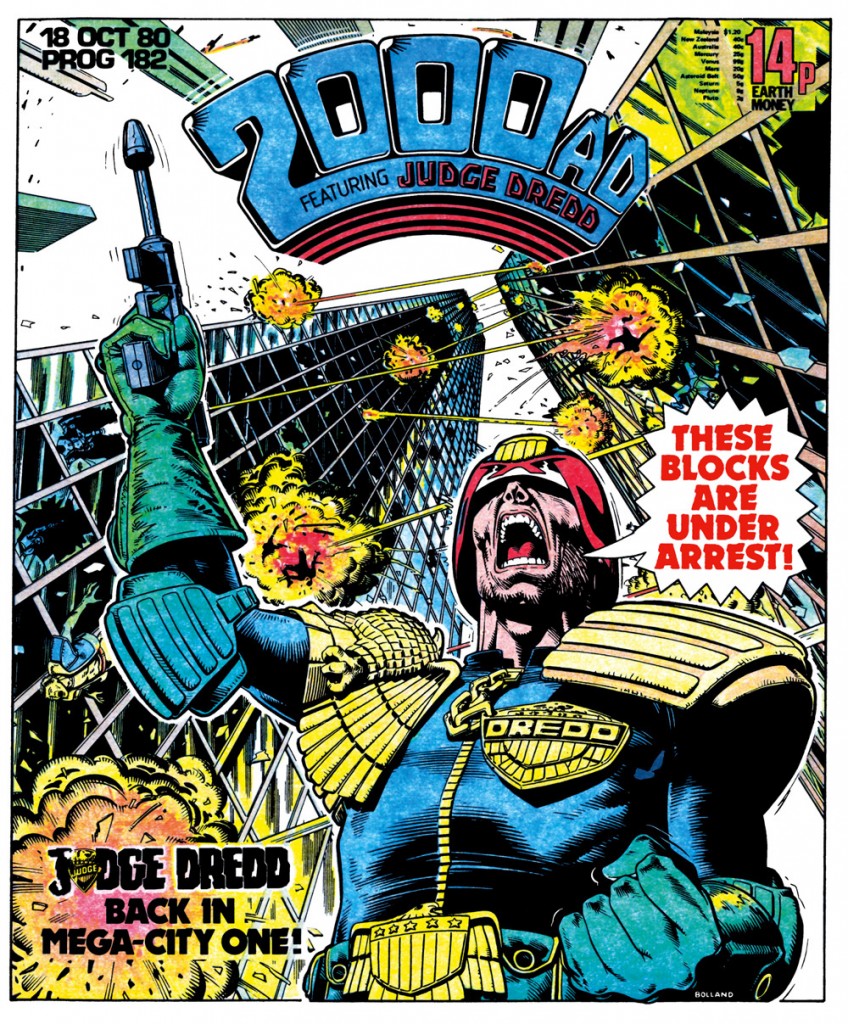
Block war! The iconic cover of prog 182 by Brian Bolland was emulated in the movie Judge Dredd (1995)
“We don’t call it violence in comics, we call it action,” says Strontium Dog writer Alan Grant.
Such an example was Flesh, one of the first strips developed for the comic, set in an age where cowboys time travel to harvest the meat from dinosaurs. And then there was Judge Dredd.
Wagner had written various Dirty Harry-inspired ‘no-nonsense cop’ stories for other comics and suggested a character that might take that idea to its logical extreme. The name Judge Dredd came from a combination of concepts and the task of visualizing this new character was given to Carlos Ezquerra, a Spanish artist who had previously worked for Mills on Battle Picture Weekly.
Ezquerra was given a poster for the film Death Race 2000, showing the character Frankenstein clad in black leather on a motorbike, as a starting point. Ezquerra made some adjustments and created the world of Mega-City One. Artist Mike McMahon drew the first strip for Judge Dredd for issue two of 2000AD that went on sale on 5th March, 1977. Before long, he became the most popular character in the comic and has appeared in almost every issue since.
Set after the Atomic Wars of 2070, the entire population of the USA is contained within three enormous mega cities, each home to about a billion citizens. The only thing that prevents civilization from descending into chaos in this dystopian future and destroying itself is the savage arm of the law. Called the Judges, they are the police and they are the military. Judge Dredd is a law enforcement officer in Mega-City One, which covers the entire eastern seaboard, from the Canadian border to the southern tip of Florida and stretching as far inland as Atlanta. He is a ‘street judge’, empowered to summarily arrest, convict, sentence and execute criminals.
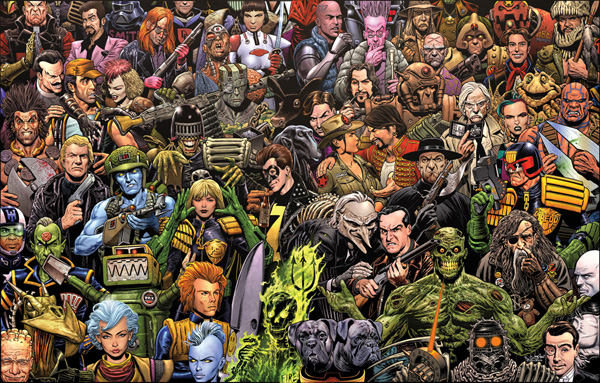
2000AD is home to a universe full of action, adventure, aliens and anti-heroes >>> click for full-size image
Judge Dredd was based in part on Margaret Thatcher and was ultimately a fascist. The more authoritarian Mills or Wagner made him, the more the readers loved him. He might work for a totalitarian state, but he was the good guy.
“The good thing about Dredd is that he does have a strong moral code. Albeit not one that we would necessarily agree with,” says Wagner.
Two attempts have been made to bring this iconic character to the big screen, firstly in Judge Dredd (1995) starring Sylvester Stallone and later Dredd (2012) starring Karl Urban. The former is mostly disregarded by fans and is generally considered a farce, but the latter is highly regarded as being faithful to the character.
In addition to its unique portrayal of extreme right wing life under the Judges, 2000AD tackled other important issues of the time.
“Just like many other kids my age, I read Dickens, and he is talking about the social evils of his day. So why shouldn’t we talk about the social evils of our day?” says Mills.
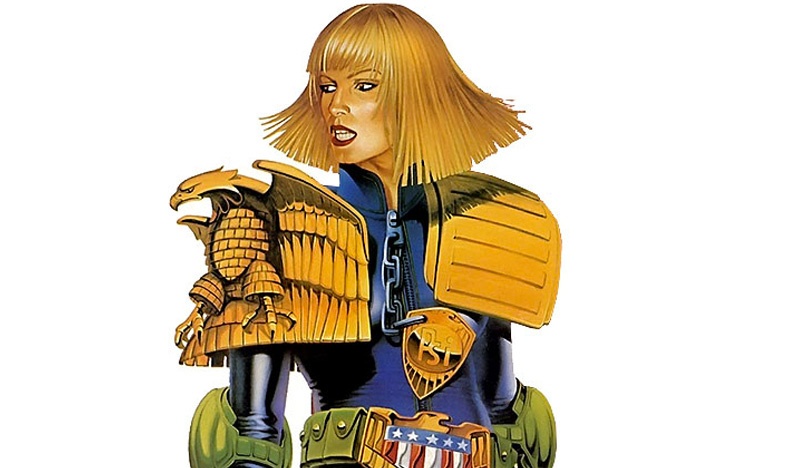
Judge Anderson is just one of many strong female characters that exist within the same totalitarian timeline as Dredd
Another popular character in the comic was Johnny Alpha, also known as Strontium Dog. He’s a mutant and in his world there’s much hatred towards mutants from ‘normals’ as a result of political-induced paranoia. Considered a second-class citizen, becoming a bounty hunter and tracking criminals across the galaxy was the only job available to him and other mutants. The story leant heavily on themes of apartheid and racial segregation, which was a prominent issue in South Africa during the 80s.
Nemesis the Warlock was a story where the entire human race were the bad guys. Created by Mills and artist Kevin O’Neill, the title character was a fire-breathing demonic alien, fighting against the fanatical Terran Empire in Earth’s distant future and their attempts to exterminate all alien life.
“Nemesis the Warlock is about xenophobia and racism. It’s all broad brushstrokes, but I think it is great that that kind of stuff is dealt with on some level. Even if it’s as simple as hating people is bad,” says artist Matt Brooker.
“What becomes plain in the later books is that he’s taken his war too far and in the end the difference between Nemesis and [the Terran Empire] is shown as being next to nothing. They both end up trapped in this cycle of hate, one no better than the other. Which I thought was a fantastic ending, but again, it doesn’t actually give you a sort of comfortable moral conclusion that good prevailed. It doesn’t even tell you what good was.”
“People were engaging with politics. With social circumstance, with poverty, with segregation, but in a really fun way. It didn’t feel like watching the news. It got around that whole issue fatigue,” says South African-raised Lauren Beukes, author of The Shining Girls and Broken Monsters.
2000AD has also given us other memorable characters, many of whom co-exist within the same totalitarian timeline as Dredd, including Judge Hershey and Judge Anderson, both very strong female leads as well as totally different types like Rogue Trooper: a genetically enhanced super soldier, the comedy duo DR & Quinch, ABC Warriors, Halo Jones and Bad Company. Why then, with such a strong stable of storylines, has 2000AD not made its mark like Marvel and DC?
“It’s because they came out from America. If 2000AD characters had actually come out from Marvel or DC, we’d have a whole studio full. It’s that British label. Look at France, right? Valérian and Laureline. All these great French characters, which influenced the look and feel of Blade Runner and Star Wars, but it’s got to go through that American filter,” says Mills.
It might not have conquered Hollywood, but 2000AD recently celebrated its 40th birthday, testament to the fact that its characters remain interesting, relevant and beautifully illustrated. Few weekly compendiums of science fiction can honestly say they’ve survived for four decades and had such an influence on contemporary culture, 2000AD can lay claim to both.
From the Watchmen, RoboCop, Mad Max and Preacher to Batman as we see him today, we owe the gutsy, gritty reflection of our world in modern storytelling to the men and women who have worked on 2000AD.
This article was published in The Wall Street Journal.
